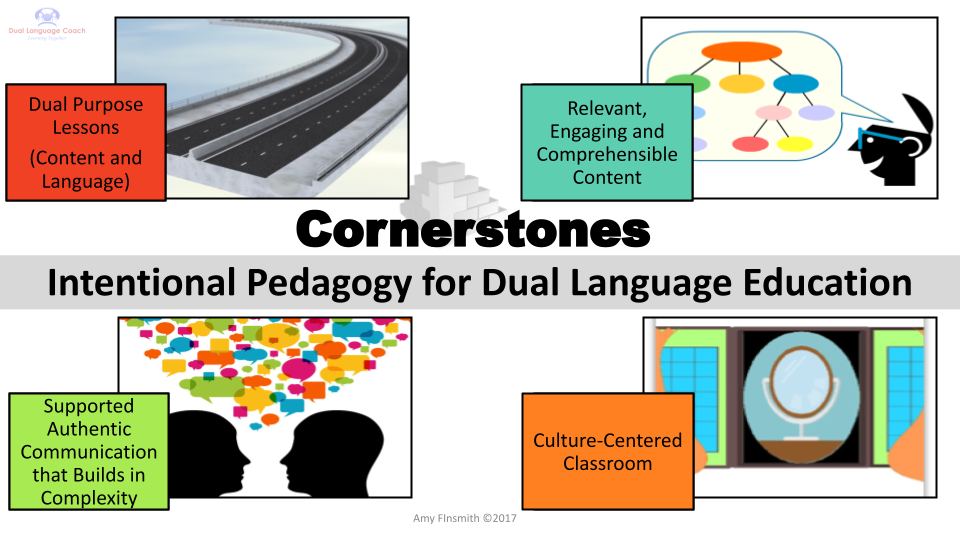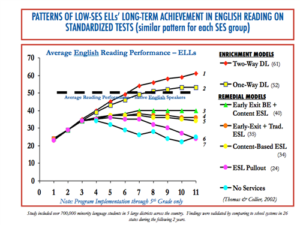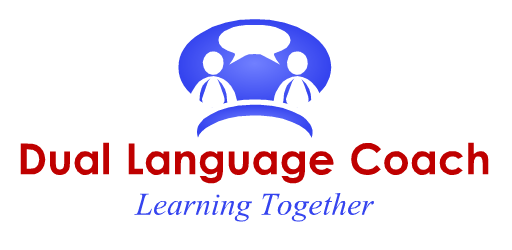



Let's start at the beginning...

New to Dual Language Teaching?
You are in the right place. Click through the tabs to learn the basics. This information will help give you a foundation in Dual Language Education.
Definition of Dual Language

Dual Language: A kind of additive bilingual program that fosters equity by providing literacy and content instruction to all students through two languages in order to reach the goals of bilingualism and biliteracy, grade-level academic achievement, and sociocultural competence.
Basically, this means that Dual Language Programs work to help their kids be bilingual, and to read and write in both languages. They also work to help their kids be successful in school, understand their identity, and get along with everyone. Kids don’t just learn another language. They learn all their subjects in both languages. When done well, Dual Language Programs can close the opportunity gap seen between Native English speakers and Emergent Bilinguals.
Dual Language Programs are distinguished from other bilingual programs by their unique goals and requirements, found in the Guiding Principles of Dual Language Education.
Goals of Dual Language

All Dual Language Programs share the same three goals, also known as pillars, of Dual Language Education:
- Grade level academic achievement in two languages
- Bilingualism and biliteracy
- Sociocultural Competence
Dual Language Programs must demonstrate commitment to these goals through actions in addition to stating them. They should be measuring how successful their program is in meeting the three goals and implement strategies that will allow more students to meet more of the goals.
Non-negotiables of Dual Language

In order for Dual Language Programs to meet their goals, they must make a series of decisions. Each Dual Language Program can be slightly different from all the others, but all should commit to the three non-negotiables:
- Long-term– The program should ideally run from K-12, but minimally would run from K-5.
- Separation of Language– While there may be times teachers intentionally bring the two languages together for a specific reason, most of the instruction takes place through supported immersion- translation is not used as a strategy for comprehension.
- At least 50% LOTE (Language other than English)- There is also variation here, with some programs starting with as much as 90% of the LOTE, 10% in English.
Why Dual Language?

Dual Language is the only program proven to eliminate the Opportunity Gap for Emerging Bilinguals. If a district can provide Dual Language Education for their students, why wouldn’t they?
With guidance and planning, any school district with enough speakers who share a common language other than English should be able to start a successful Dual Language Program and equitably serve their Emerging Bilingual students.
Voices from the Field
Please check out these other resources by Dual Language experts. They are worth following on social media too!
- Aradhana Mudambi
- Karen Beeman & Cheryl Urow
- Kathy Escamilla & Susan Hopewell
- Alexandra Guilamo
- Elizabeth Howard & Shera Simpson
- José Medina
- Jill Kerper Mora
Organizations:
